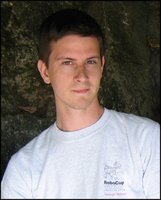
The department is pleased to announce the addition of James Hays as a new faculty member. He will start at Brown in the spring of 2010 after serving as a Postdoctoral scholar at MIT and receiving his Ph.D. from Carnegie Mellon University. James’ research interests are in computer vision and computer graphics, focusing on image understanding and manipulation leveraging massive amounts of data.
With the addition of James, as well as Rodrigo Fonseca and Erik Sudderth who will join the department in the fall semester, the department is expected to reach a record number of 27 tenured and tenure-track faculty in the spring. “We are delighted to welcome James to Brown in the spring,” said Chair Roberto Tamassia. “He is a brilliant and talented scholar and we look forward to his arrival.”
James received his B.S. in Computer Science from Georgia Institute of Technology in 2003 and expects to complete his Ph.D. in Computer Science at Carnegie Mellon University in 2009, where he was the recipient of a National Science Foundation Graduate Research Fellowship. He will join Brown after serving as a Postdoctoral scholar at MIT. James has given invited talks at Google, MIT and the University of Illinois.
James’ research focuses on using “internet scale” data to improve scene understanding and allow smarter image synthesis and manipulation. His interests span computer graphics, computer vision, and computational photography including topics such as image completion, photo quality assessment and enhancement, place and object recognition, texture modeling and animation. More broadly, James is interested in the connections between human and machine vision.
“I'm thrilled to be joining Brown,” said James. “I think Brown is a great place to be a teacher and a researcher. The Computer Science department has great faculty and students who are amazingly friendly and engaged. I look forward to collaborating with many people within the department and the university as a whole.”
